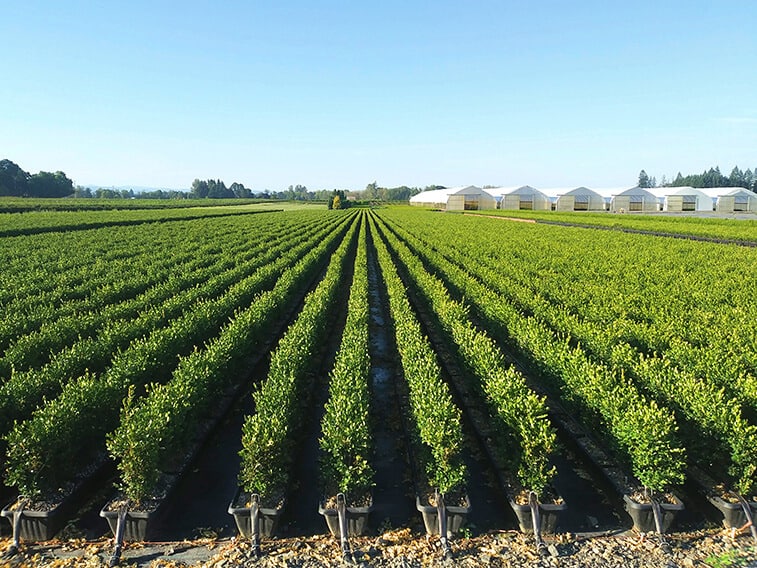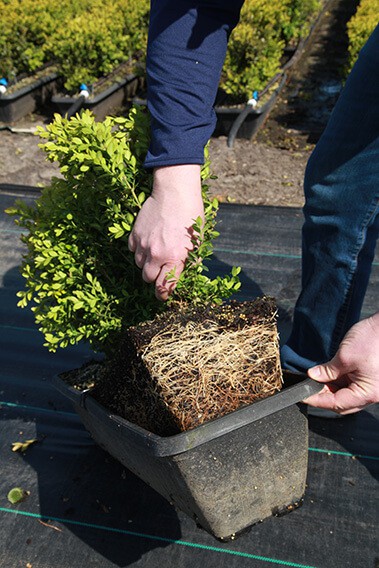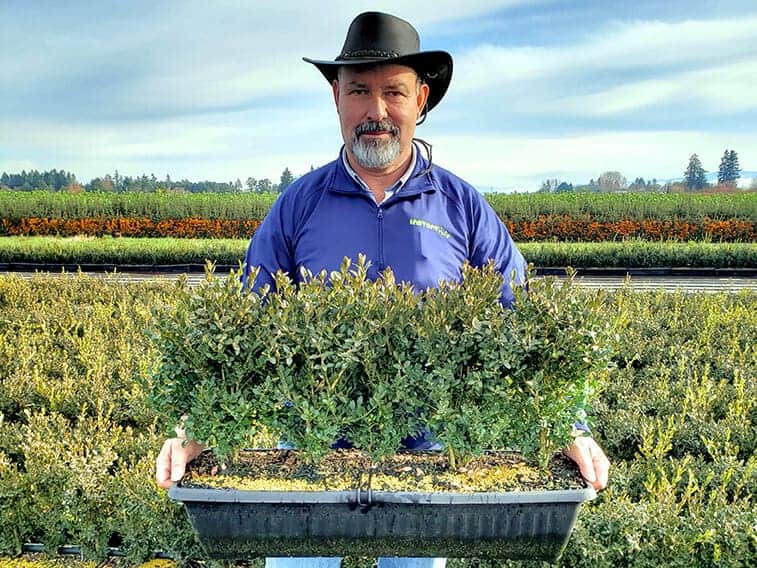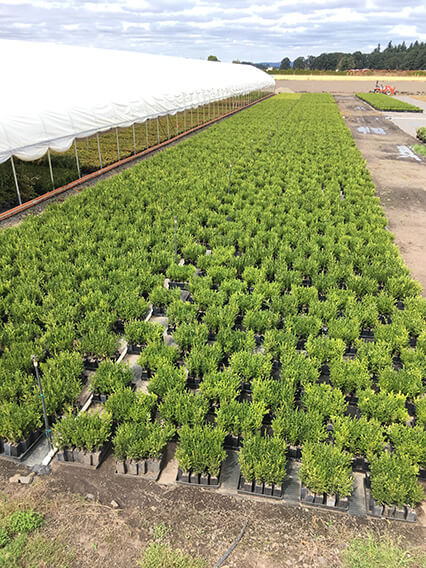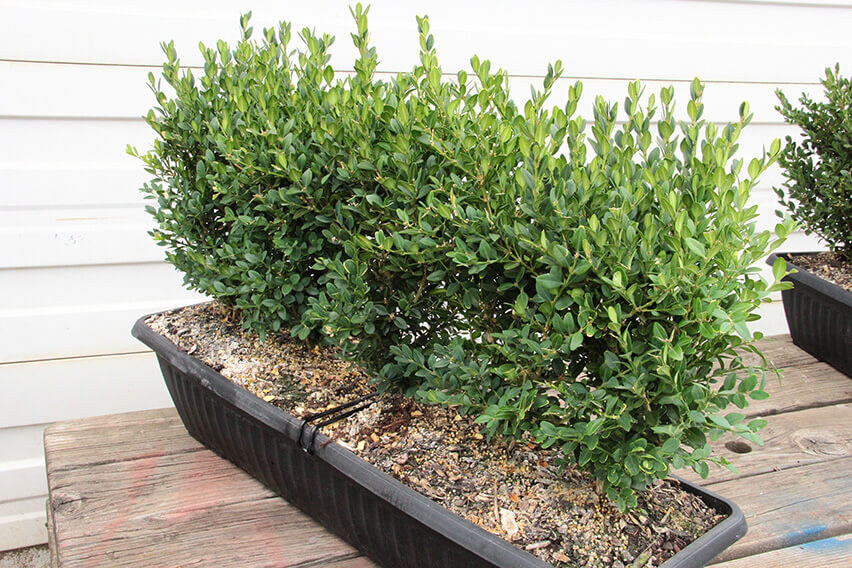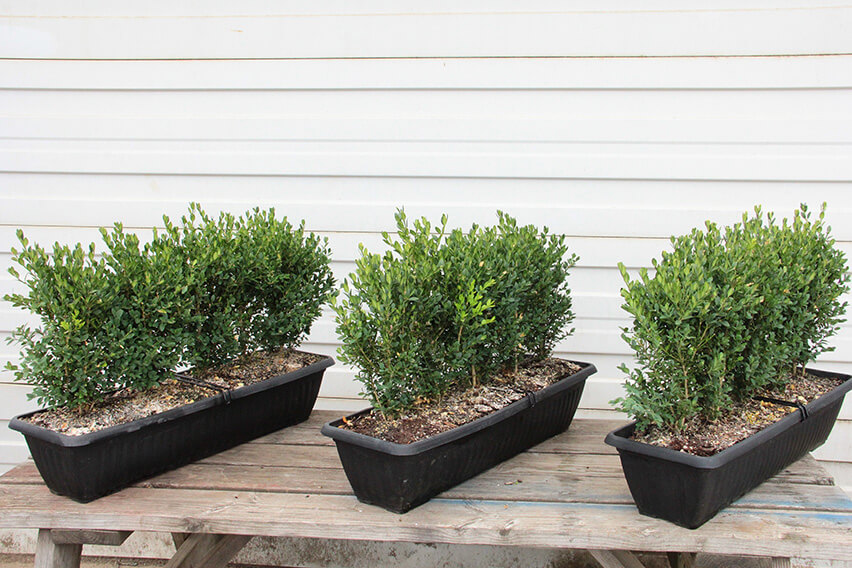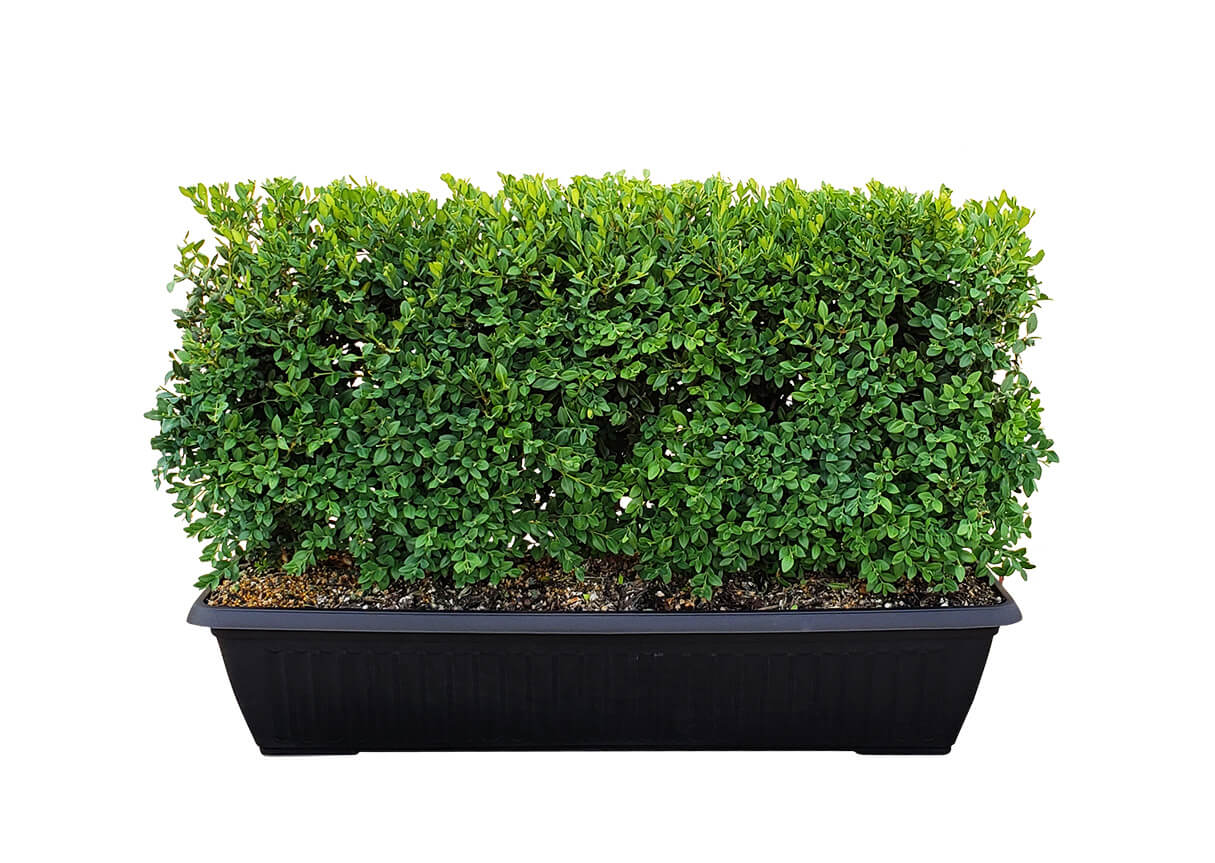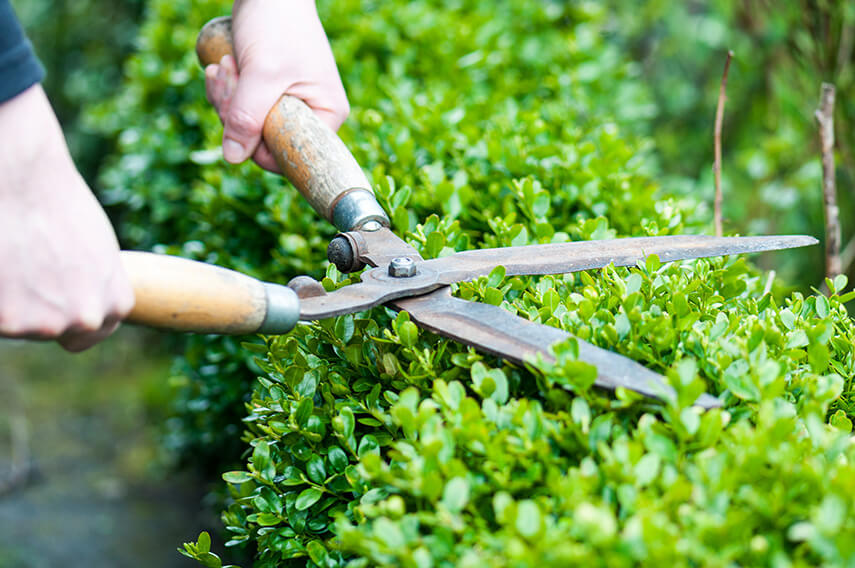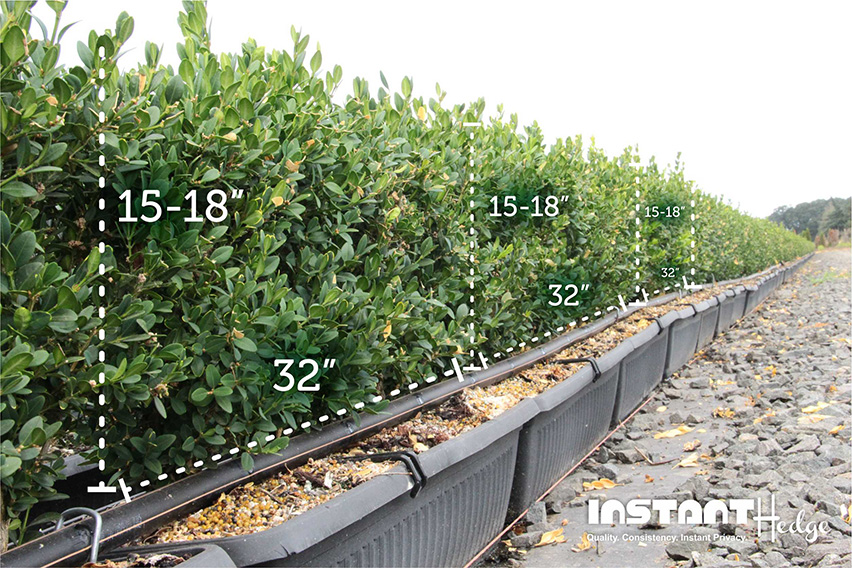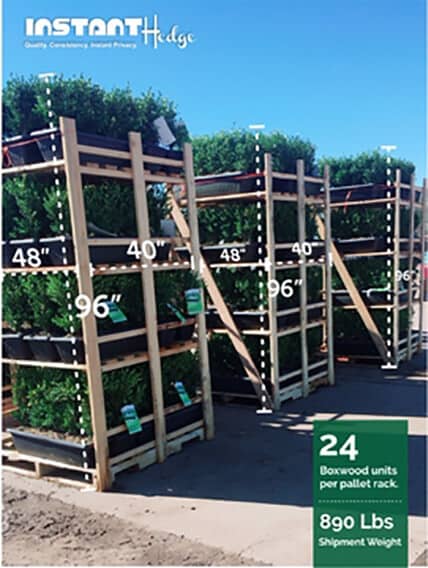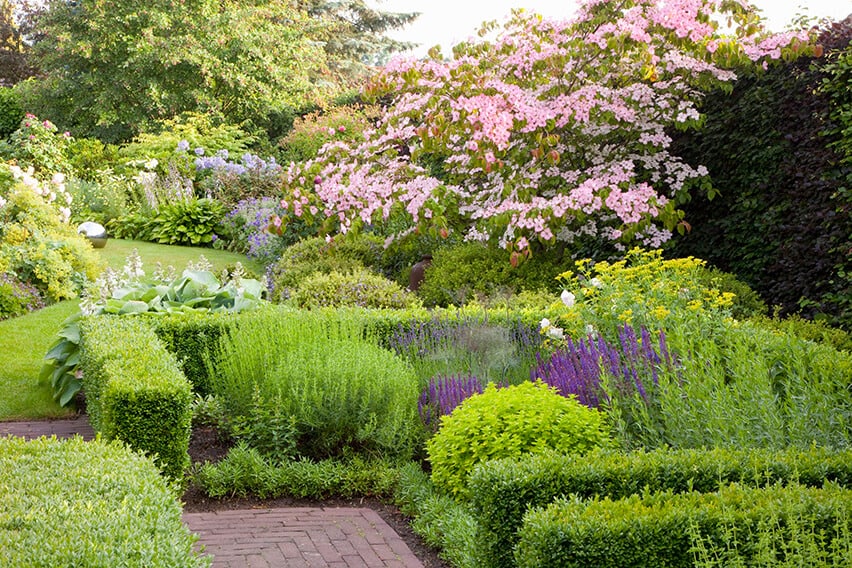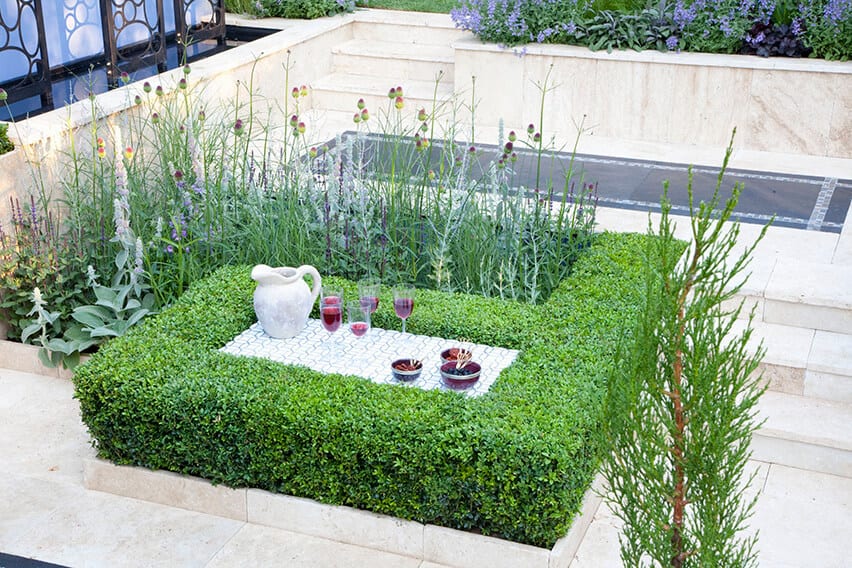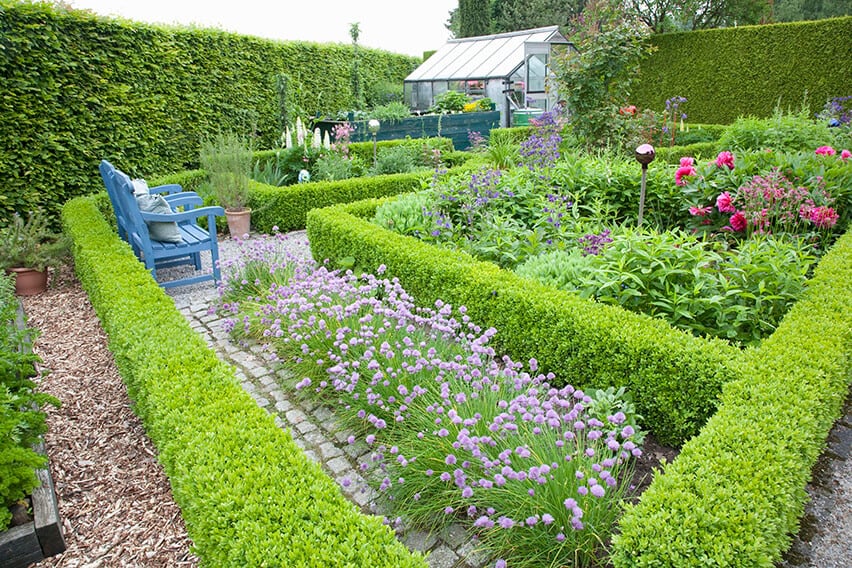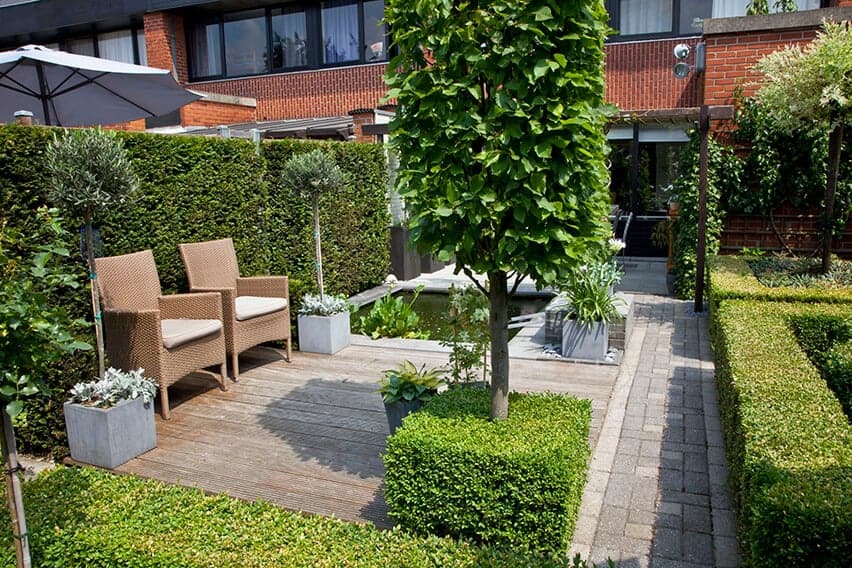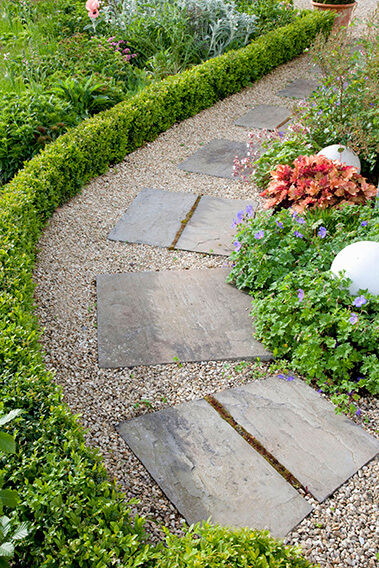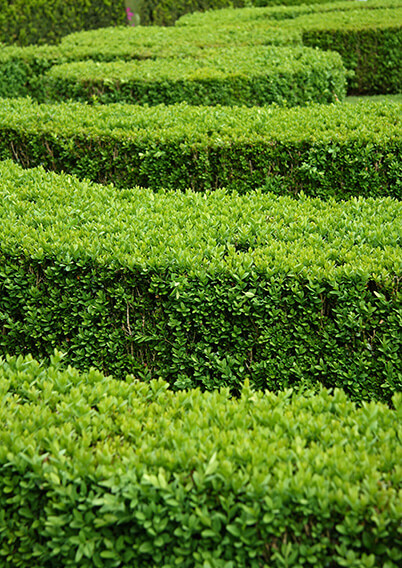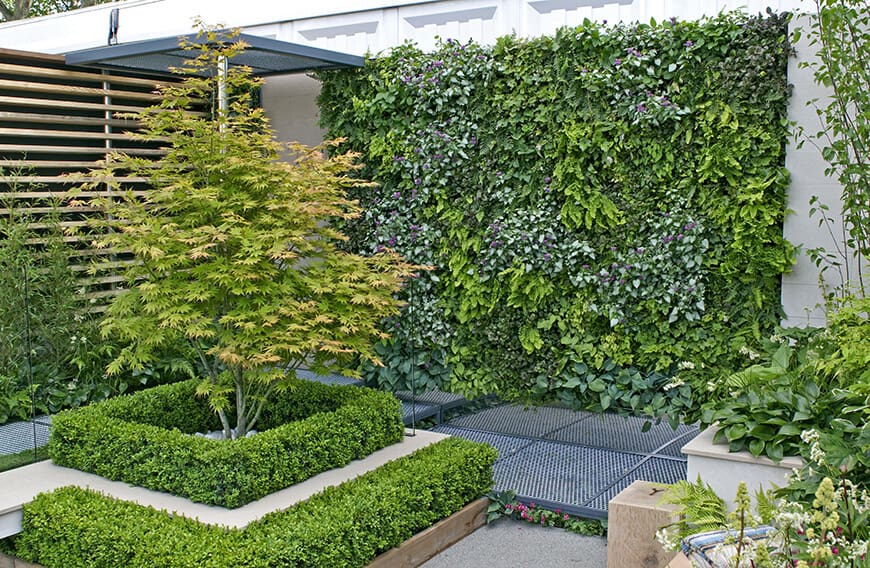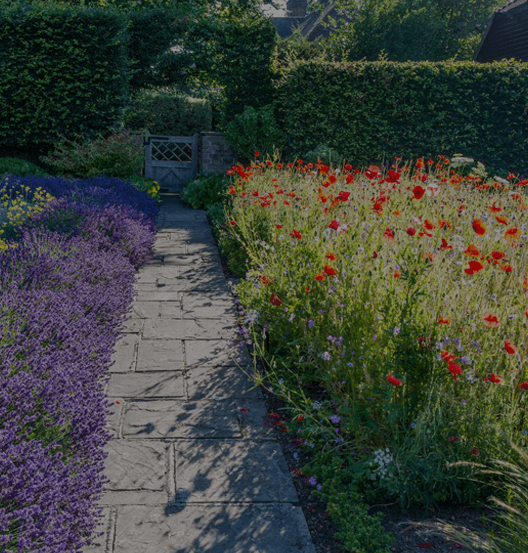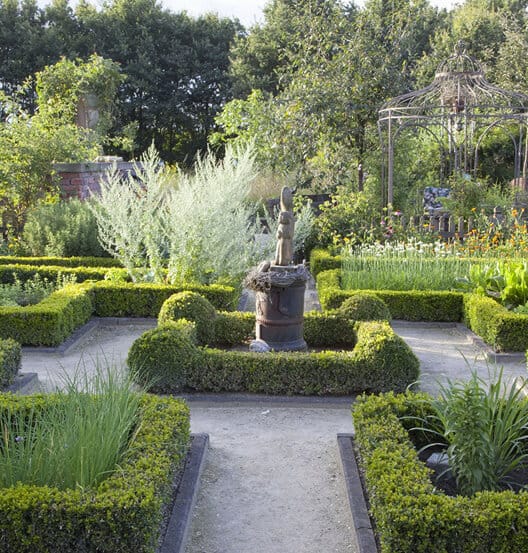Why choose a Green Mountain Boxwood Hedge?
There are many different species and varieties of boxwood hedges available on the market, but we and millions of others prefer Buxus Green Mountain Boxwood Hedge for some very specific reasons. Buxus x ‘Green Mountain’ (a hybrid) has been among one of the most popular varieties of box hedges in the US since its introduction in the 1970s. It surpassed many of the standby varieties due to its wonderful appearance, hardiness, and low maintenance needs. The green mountain boxwood can grow in full sun to nearly full shade, and deer won’t touch it. It is versatile and tough, and we just can’t get enough of it.
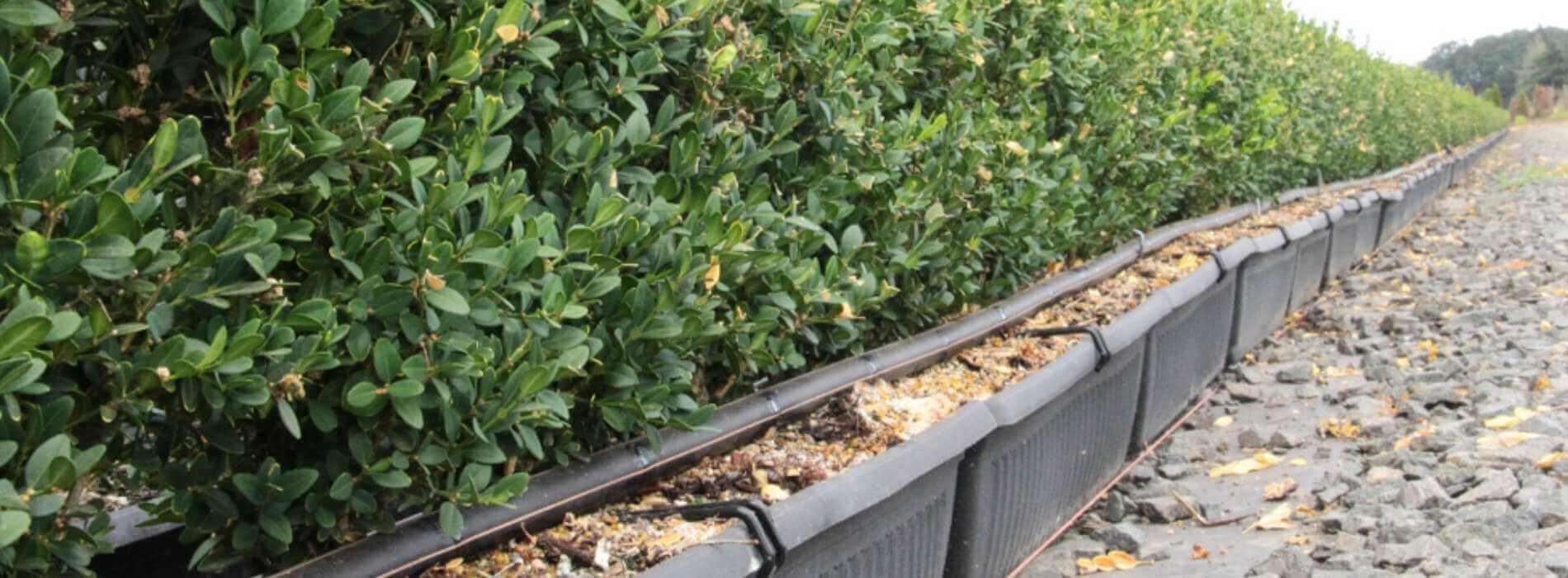
A Beautiful Specimen
One of the main reasons to love the Green Mountain Boxwood hedge is for its lovely appearance. Boxwood has been the landscape plant of choice for thousands of years, and Buxus Green Mountain offers significant improvements over the older varieties
A True Classic
Boxwoods have been used in gardens for hedges as far back as 4000 BC when they were favored by the Egyptians (we know, it’s crazy). Green Mountain Boxwood was then used extensively throughout Europe before being introduced to the US in the 1650s. Buxus Green Mountain can be found at many historical estates throughout the world, and it is a key ingredient in historic estate restoration projects.

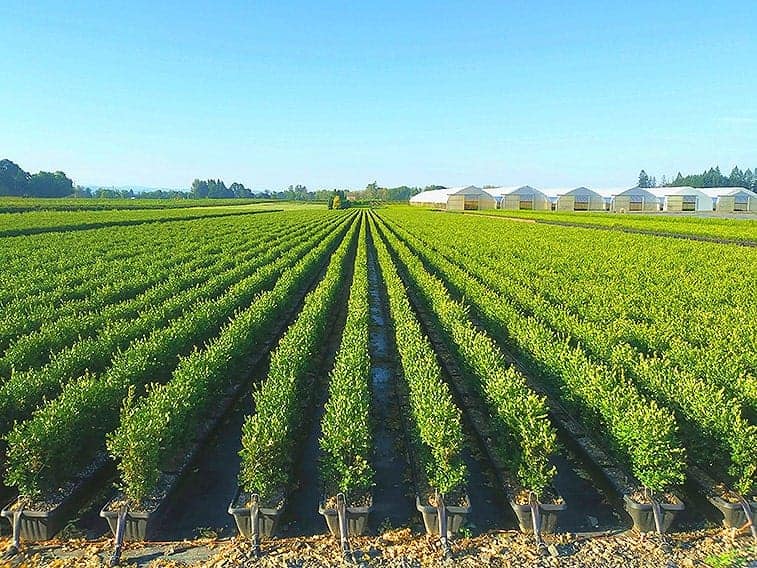
Foliage
The Green Mountain Boxwood Hedge displays brilliant winter colors shining through in all their glory. Many boxwood cultivars experience some degree of winter bronzing, and it can take on a very unattractive hue on many varieties. Green Mountain, however, has very little bronzing in winter and it really only happens when they are in full sun. As soon as the weather begins to warm in spring, the bronzed tips are quickly replaced with lush green leaf color.
Form and Growth Rate
Green Mountain Boxwood’s growth rate is moderate for a boxwood hedge, increasing by about 4 inches per year. This rate can be increased by optimum water and fertilizer. Typically, growth slows after they reach about 15 years of age. This moderate green mountain boxwood growth rate means you can achieve a sizable box hedge without having to wait very long, but you also won’t be burdened with heavy maintenance requirements. At around 15 years old, left unpruned, it can reach around 3.5’ tall by 2.5’ wide.
Tough as Nails
Not only is Green Mountain Boxwood a beauty, but it is also incredibly tough, hardy, and easy to grow.
Pests
Deer and rabbits avoid boxwoods in general. Green Mountain Boxwood does not have any other serious pest issues. Some things to watch for with any boxwood are psyllid, leaf miner, and mites, but all of these can be easily treated with simple cultural methods or low-intensity insecticides.
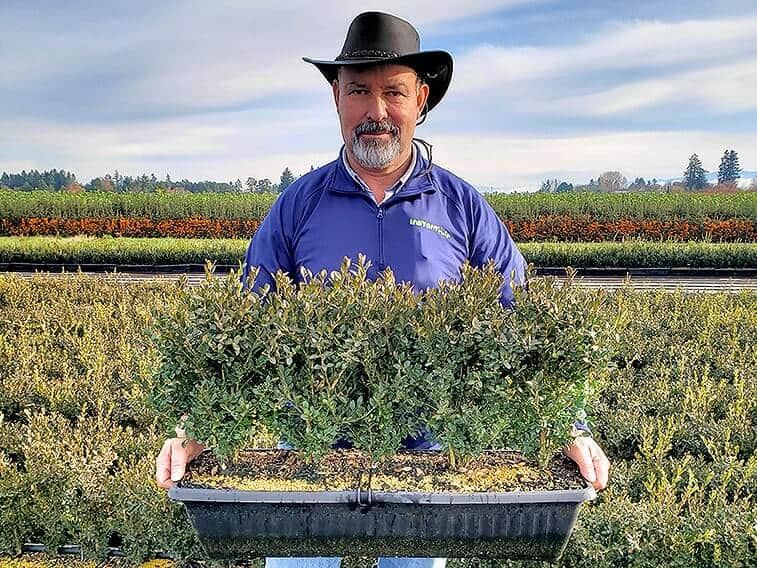
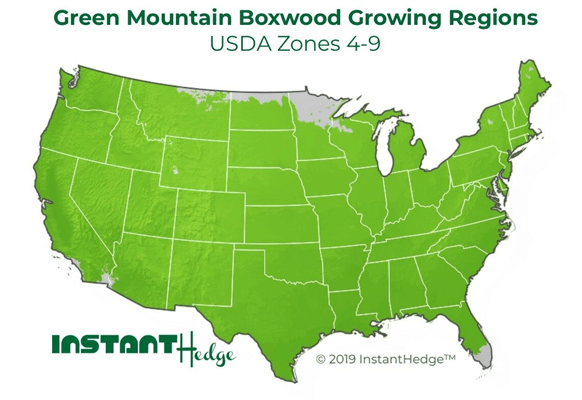
Hardiness
Green Mountain boxwood hedge is one of the most cold-hardy boxwoods available. Bred in Canada originally, it grows well down to USDA Zone 4. Its growing region is truly huge.
Drought
Green Mountain Boxwood Hedge prefers a drier growing environment to a very wet one. Once established, it can be quite drought tolerant. It is best to water deeply with drip irrigation once per week or so in the driest times of year (summer in some areas, winter in others). Keeping water off the leaves is important for the health of any boxwood.
Blight
The most common topic surrounding buxus green mountain hedges over the past few years is Boxwood Blight. This fungal disease is easily spread from plant to plant, particularly in wet areas. Infection results in leaf drop and eventual death of the plant. It affects boxwoods, Sweet Box (Sarcococca sp.), and Pachysandra.
No boxwood variety as of yet has been shown to be fully resistant to Boxwood Blight, but there are definitely some that are more resistant than others. Green Mountain Boxwood Hedge has shown itself to be among the top varieties for resistance, although different studies have had inconsistent results regarding exactly how near the top it falls. Our boxwood crops are certified blight-free by our participation in the voluntary Oregon Boxwood Blight Cleanliness Program. We go through rigorous cleanliness practices and have regular inspections to ensure our boxwoods are 100% clean. We are approved to ship boxwood into any state.

While the thought of Blight can be scary, the good news is that it can be effectively prevented and controlled by careful cultural practices. The main factors are cleanliness (cleaning up leaf debris, thinning plants to improve airflow), and water practices (avoid leaf wetness and planting sites must be well draining). There are also some products available that can be applied to control the pathogen. If you do have an area where you have lost boxwoods to blight, we don’t recommend planting boxwoods again, but maybe try boxwood alternatives such as Hick’s Yew (Taxus x media ‘Hicksii’) or Box Honeysuckle (Lonicera Nitida).
Low-Maintenance
Buxus Green Mountain Boxwood hedges are incredibly easy to care for, which is especially wonderful since they are typically planted in large quantities. Instead of trying to wrangle a weed-like privet hedge, do yourself a favor by planting low-maintenance boxwood hedges.
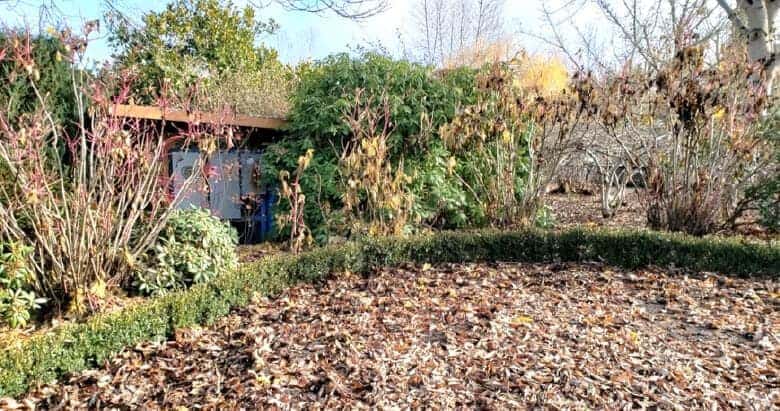
Planting
The best time to plant a boxwood hedge plant is in fall or spring. In more temperate climates where the soil is workable throughout the winter, planting boxwood in winter is also a good choice. Planting box hedges in summer are possible, but it is important to keep the hedge well-watered to avoid unnecessary stress that may weaken the plants. Whenever you choose to plant Buxus, choose a well-draining planting site, do not bury any of the trunks of the plants in soil, and make sure to water thoroughly right after planting. A generous application of mulch is very beneficial.
Fertilizing
Boxwoods are not “hungry” plants, and if the existing soil has a pH level of 6.5-7 you may not need to supplement at all. Applying some compost or a slow-release fertilizer on top of your mulch layer in late fall may be beneficial, but is likely not necessary to keep your box hedge thriving.
Watering
It is important to water your green mountain boxwood hedge well right after planting to help the plants get established. After that, they will need the 1-2” of water per week, whether from drip irrigation or rainfall. Overhead irrigation is not ideal for boxwoods as leaf wetness is a good way to spread common box hedge diseases. The soil should be allowed to dry between periods of watering, but do not let it get so dry that the plants begin to show signs of lack of water.
Pruning
One yearly pruning is plenty to control Green Mountain Boxwood hedges. The best times to prune are late fall, winter, and early spring. You can use hand shears or an electric trimmer, but make sure the blades are sharp. To prevent spreading disease, sanitize the blades with alcohol when moving between groups.
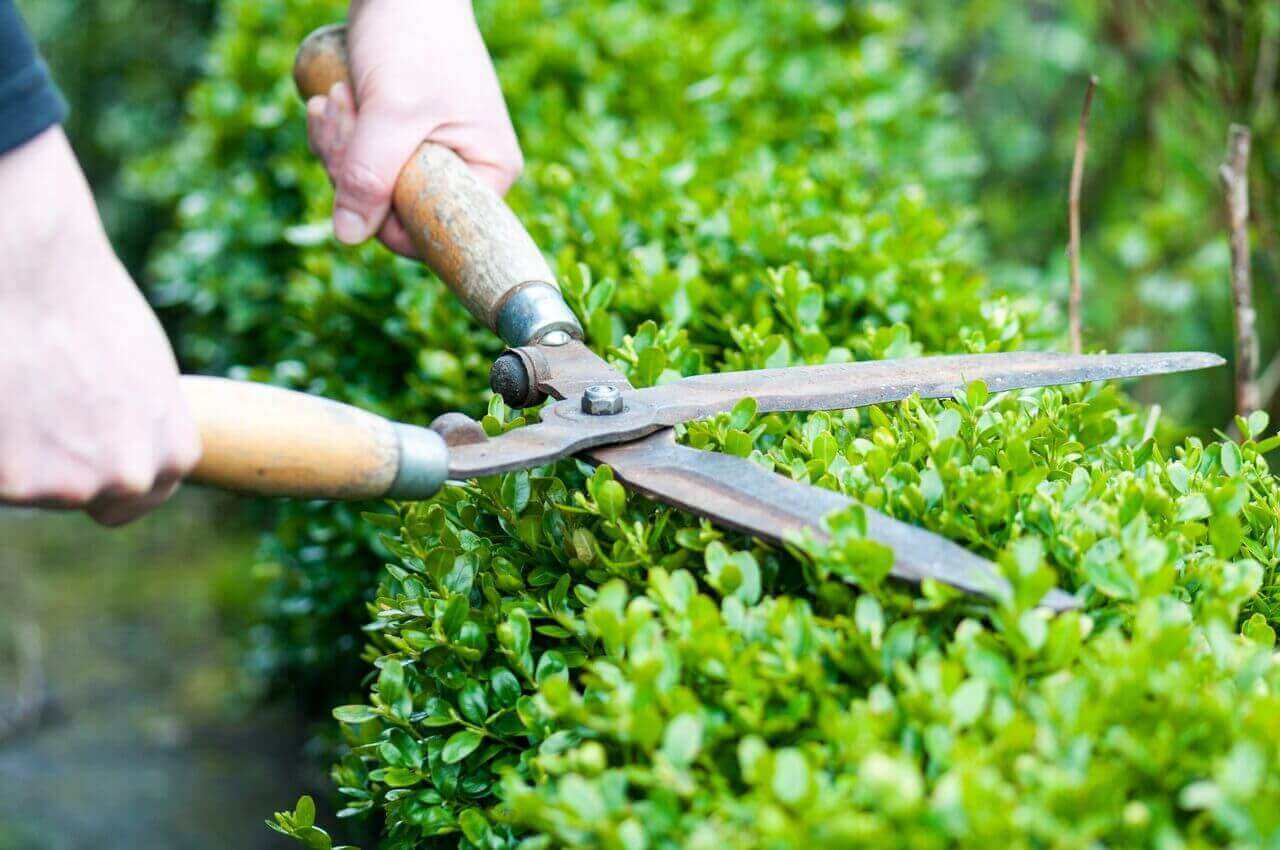
Versatile
Boxwoods are extremely versatile, proven by the fact that they are used just as often, if not more, today as they were in ancient Egypt. The different Buxus species are native to regions all over the world, from Europe to Asia. They suit many different landscape styles and can be grown in a wide range of areas.
Any Style
Boxwood hedges are equally at home in the grand knot gardens of Versailles as they are on a modern rooftop garden at a hotel in New York City. Humble cottage-style gardens can use them to reign in drifting flowerbeds, and they look smart lining paths and sidewalks in suburban areas. It’s hard to go wrong with a tidy, evergreen, low-maintenance hedge like boxwood.
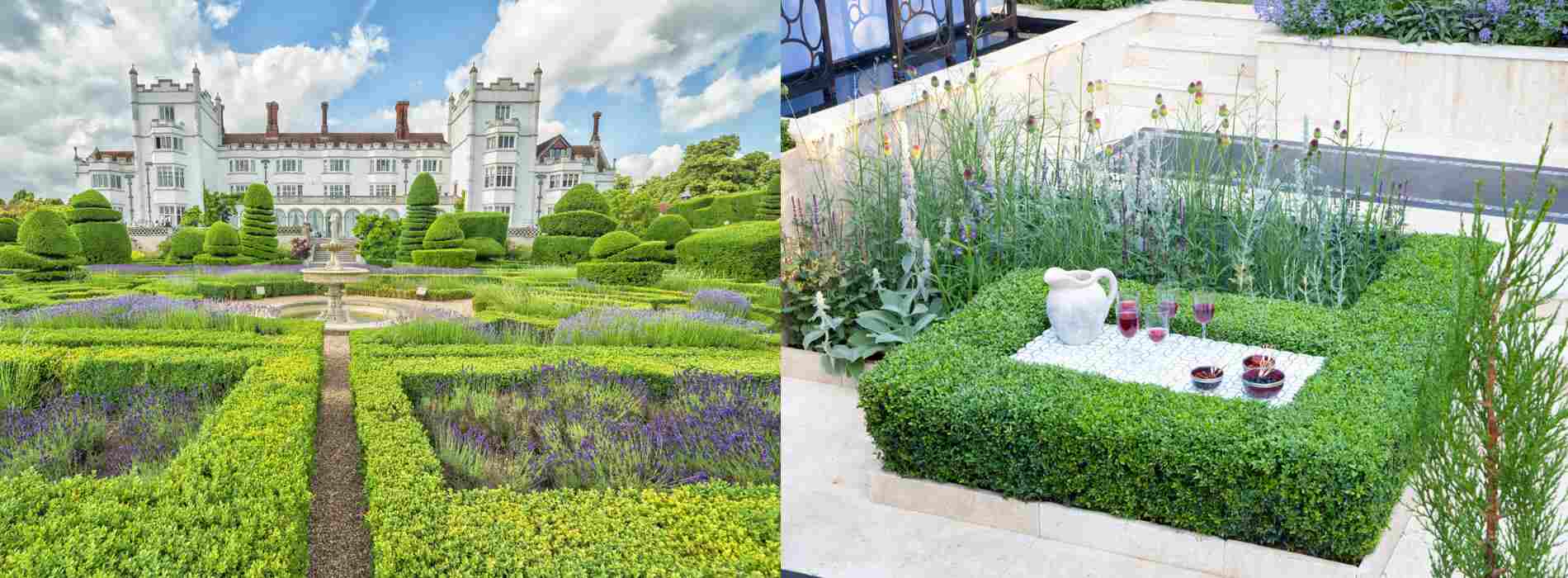
Any Site
Green Mountain Boxwood grows well in all different exposures, from full sun to nearly full shade. It isn’t bothered by deer, and it tolerates urban pollution well. It grows well in containers as well as in the ground. You’d be hard-pressed to find a spot where a Green Mountain boxwood wouldn’t grow.
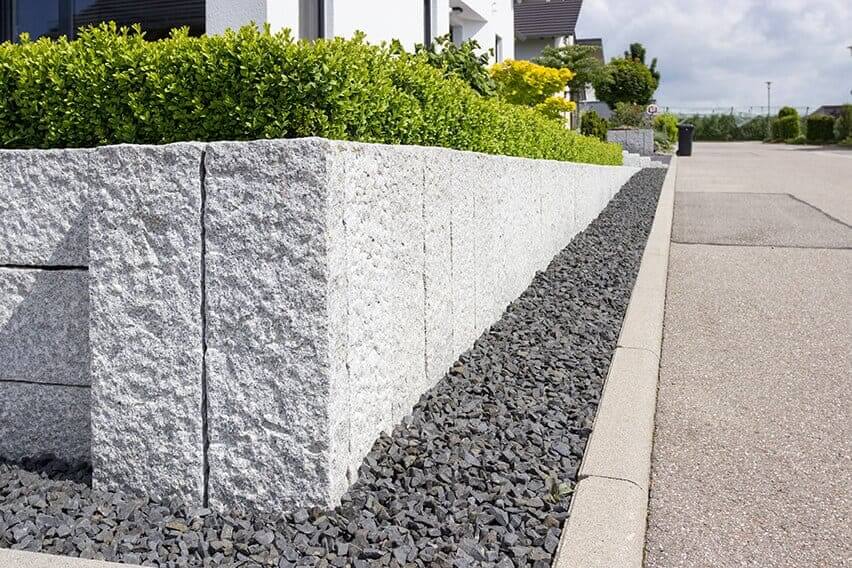
Any Shape
Our boxwood hedges can be planted as straight or curved borders, as a radius or circle, or any other pattern you can imagine. The units can easily be trimmed to fit a certain space, and they can also be scored and curved. They are young enough when they are shipped that they can be pruned to any desired shape.
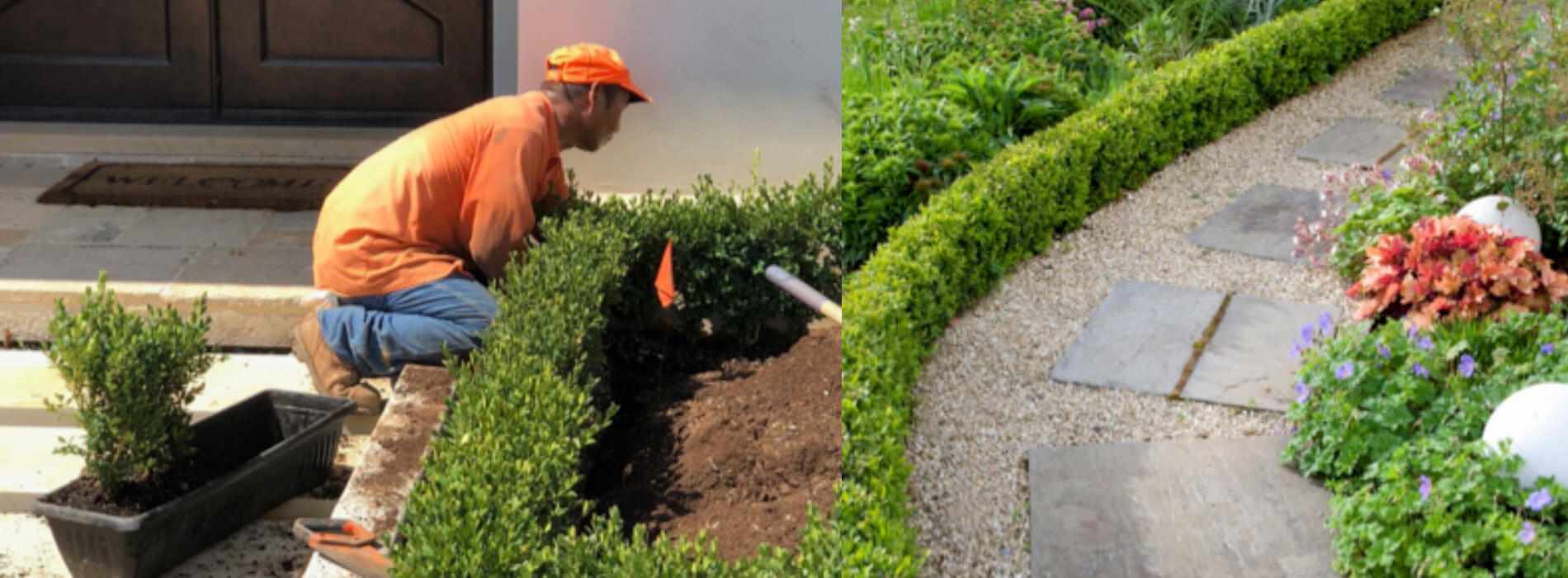
Many Zones
Green Mountain Boxwood hedge has one of the largest growing regions of any hedge type we grow. It can grow in almost the entire United States. That can’t be said for most plants!
WHY CHOOSE INSTANTHEDGE FOR GREEN MOUNTAIN BOXWOOD?
Traditional Methods
Planting boxwood hedges means digging dozens, if not hundreds or thousands, of little holes. You must try to keep them in a straight line. It also means purchasing dozens, if not hundreds or thousands, of tiny boxwood plants and planting them in all the little holes. Then, you wait for several years for all the little boxwoods to become bigger buxus green mountain hedges. As they do, you must shape the hedges repeatedly and hope that you don’t make any mistakes that might not be fixable.
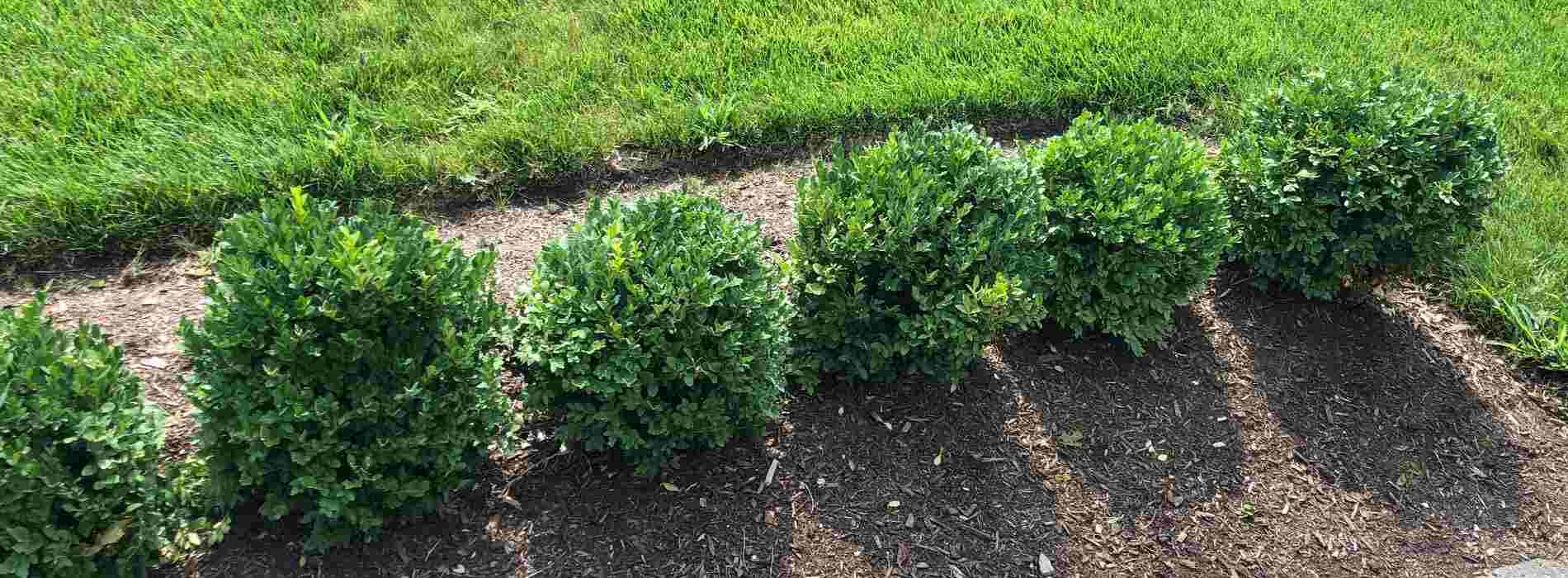
InstantHedge
Planting a Green Mountain Boxwood InstantHedge means digging one long trench, perhaps very quickly with a mini excavator. You buy the exact amount of hedge units needed for your linear footage, then set the 32” InstantHedge units in the trench, end to end. They are pre-shaped, pre-spaced, and pre-finished. You will have a finished boxwood hedge in one day.
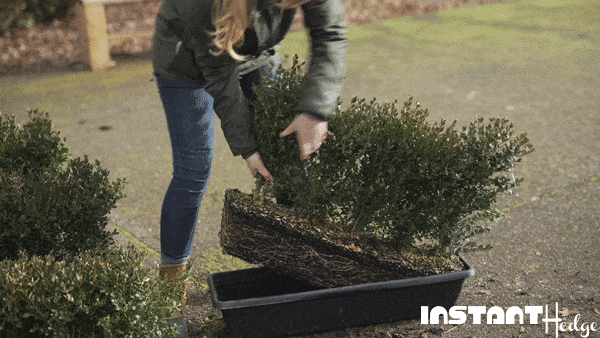
Quality
When you plant a traditional boxwood hedge, you may be tempted to start with bare-root or very small plants to save on initial costs. You are very likely to lose plants due to the stress caused by bare-rooting or by simply planting them too small. When you start with an InstantHedge, the plants have vigorous, healthy roots and will experience little to no transplant shock. They arrive ready to thrive and grow, after being given the best possible start by the InstantHedge experts. So why wait for years, when you can get a fully grown Buxus Green Mountain hedge and install it in just one day!
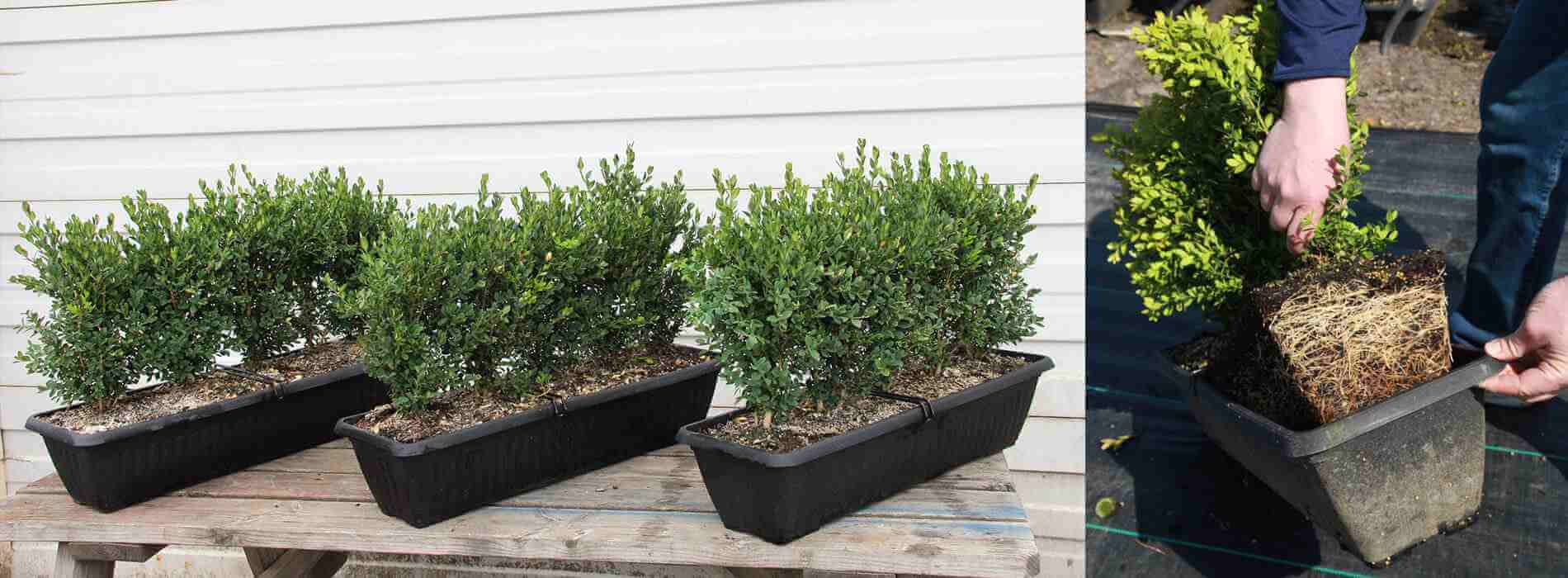
InstantHedge Green Mountain Boxwood Hedges – A Video Journey
A video is worth a million words. See for yourself the speed, ease, and versatility of Boxwood InstantHedges.
